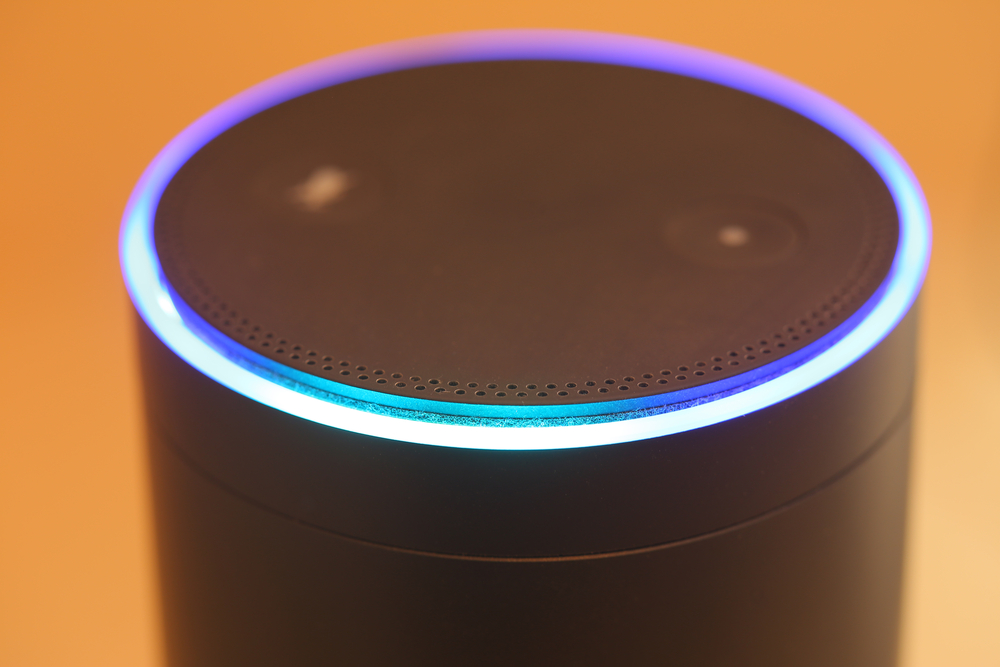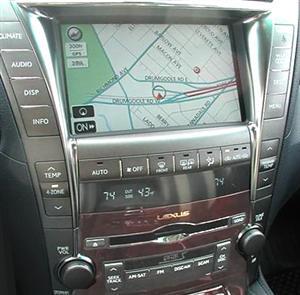 For an event that positions itself as highlighting the latest and greatest in technology, the Consumer Electronics Show (CES) devotes an incredible amount of floor space to hardware that’s decades old: televisions, headphones, speakers, and cars. But amidst all that tried-and-true hardware, you see some cutting-edge things, and CES 2017 is no different. This year, the Internet of Things (IoT) and the connected home seem to be drawing a good deal of buzz. If the world’s tech companies have their way, it seems, everything from smoke alarms to washer/dryer units to doorbells will feature Internet connectivity and voice activation—and all these devices will interact with one another. With regard to the voice activation, many of these devices integrate with Amazon’s Alexa. Amazon is clearly trying to make Alexa the “default” voice platform for controlling the connected home, although it will almost certainly face aggressive competition in the future from the likes of Google and Microsoft. Just because a device makes it to the show floor at CES, however, doesn’t mean it’ll succeed in the real world. Every year, companies flood CES with offerings in a “hot” device category; past contenders have included phones, tablets, and wearables. And every year, the vast majority of those products trotted out for a cooing public will suffer the most ignoble of demises on the public marketplace—if they even reach mass production. Way back in ye olden days of 2010, for example, Microsoft’s then-CEO Steve Ballmer arrived at CES to show off a tablet PC produced in conjunction with Hewlett-Packard. Despite that huge burst of publicity, the tablet was never released, perhaps suffocated in its crib by the iPad, which Apple unveiled a few months later. So it’s highly likely that many of the voice-activated IoT devices witnessed at CES this year will never reach consumers’ hands, or fail to sell once they appear. But that doesn’t mean IoT as a whole is dead; to the contrary, a massive presence at CES is usually a good indicator that a tech category is here to stay. (There are exceptions to that rule: 3D television and smartphones, a major show presence just a few short years ago, are all but extinct.) In light of that, for developers and others who work in the IoT category (or are thinking of working in it), CES may provide something of a morale boost. The big question now is what voice-activated platforms will challenge Alexa and dominate the ecosystem, and which kinds of hardware will resonate with consumers.
For an event that positions itself as highlighting the latest and greatest in technology, the Consumer Electronics Show (CES) devotes an incredible amount of floor space to hardware that’s decades old: televisions, headphones, speakers, and cars. But amidst all that tried-and-true hardware, you see some cutting-edge things, and CES 2017 is no different. This year, the Internet of Things (IoT) and the connected home seem to be drawing a good deal of buzz. If the world’s tech companies have their way, it seems, everything from smoke alarms to washer/dryer units to doorbells will feature Internet connectivity and voice activation—and all these devices will interact with one another. With regard to the voice activation, many of these devices integrate with Amazon’s Alexa. Amazon is clearly trying to make Alexa the “default” voice platform for controlling the connected home, although it will almost certainly face aggressive competition in the future from the likes of Google and Microsoft. Just because a device makes it to the show floor at CES, however, doesn’t mean it’ll succeed in the real world. Every year, companies flood CES with offerings in a “hot” device category; past contenders have included phones, tablets, and wearables. And every year, the vast majority of those products trotted out for a cooing public will suffer the most ignoble of demises on the public marketplace—if they even reach mass production. Way back in ye olden days of 2010, for example, Microsoft’s then-CEO Steve Ballmer arrived at CES to show off a tablet PC produced in conjunction with Hewlett-Packard. Despite that huge burst of publicity, the tablet was never released, perhaps suffocated in its crib by the iPad, which Apple unveiled a few months later. So it’s highly likely that many of the voice-activated IoT devices witnessed at CES this year will never reach consumers’ hands, or fail to sell once they appear. But that doesn’t mean IoT as a whole is dead; to the contrary, a massive presence at CES is usually a good indicator that a tech category is here to stay. (There are exceptions to that rule: 3D television and smartphones, a major show presence just a few short years ago, are all but extinct.) In light of that, for developers and others who work in the IoT category (or are thinking of working in it), CES may provide something of a morale boost. The big question now is what voice-activated platforms will challenge Alexa and dominate the ecosystem, and which kinds of hardware will resonate with consumers. At CES, Voice-Driven IoT Cements Its Presence
 For an event that positions itself as highlighting the latest and greatest in technology, the Consumer Electronics Show (CES) devotes an incredible amount of floor space to hardware that’s decades old: televisions, headphones, speakers, and cars. But amidst all that tried-and-true hardware, you see some cutting-edge things, and CES 2017 is no different. This year, the Internet of Things (IoT) and the connected home seem to be drawing a good deal of buzz. If the world’s tech companies have their way, it seems, everything from smoke alarms to washer/dryer units to doorbells will feature Internet connectivity and voice activation—and all these devices will interact with one another. With regard to the voice activation, many of these devices integrate with Amazon’s Alexa. Amazon is clearly trying to make Alexa the “default” voice platform for controlling the connected home, although it will almost certainly face aggressive competition in the future from the likes of Google and Microsoft. Just because a device makes it to the show floor at CES, however, doesn’t mean it’ll succeed in the real world. Every year, companies flood CES with offerings in a “hot” device category; past contenders have included phones, tablets, and wearables. And every year, the vast majority of those products trotted out for a cooing public will suffer the most ignoble of demises on the public marketplace—if they even reach mass production. Way back in ye olden days of 2010, for example, Microsoft’s then-CEO Steve Ballmer arrived at CES to show off a tablet PC produced in conjunction with Hewlett-Packard. Despite that huge burst of publicity, the tablet was never released, perhaps suffocated in its crib by the iPad, which Apple unveiled a few months later. So it’s highly likely that many of the voice-activated IoT devices witnessed at CES this year will never reach consumers’ hands, or fail to sell once they appear. But that doesn’t mean IoT as a whole is dead; to the contrary, a massive presence at CES is usually a good indicator that a tech category is here to stay. (There are exceptions to that rule: 3D television and smartphones, a major show presence just a few short years ago, are all but extinct.) In light of that, for developers and others who work in the IoT category (or are thinking of working in it), CES may provide something of a morale boost. The big question now is what voice-activated platforms will challenge Alexa and dominate the ecosystem, and which kinds of hardware will resonate with consumers.
For an event that positions itself as highlighting the latest and greatest in technology, the Consumer Electronics Show (CES) devotes an incredible amount of floor space to hardware that’s decades old: televisions, headphones, speakers, and cars. But amidst all that tried-and-true hardware, you see some cutting-edge things, and CES 2017 is no different. This year, the Internet of Things (IoT) and the connected home seem to be drawing a good deal of buzz. If the world’s tech companies have their way, it seems, everything from smoke alarms to washer/dryer units to doorbells will feature Internet connectivity and voice activation—and all these devices will interact with one another. With regard to the voice activation, many of these devices integrate with Amazon’s Alexa. Amazon is clearly trying to make Alexa the “default” voice platform for controlling the connected home, although it will almost certainly face aggressive competition in the future from the likes of Google and Microsoft. Just because a device makes it to the show floor at CES, however, doesn’t mean it’ll succeed in the real world. Every year, companies flood CES with offerings in a “hot” device category; past contenders have included phones, tablets, and wearables. And every year, the vast majority of those products trotted out for a cooing public will suffer the most ignoble of demises on the public marketplace—if they even reach mass production. Way back in ye olden days of 2010, for example, Microsoft’s then-CEO Steve Ballmer arrived at CES to show off a tablet PC produced in conjunction with Hewlett-Packard. Despite that huge burst of publicity, the tablet was never released, perhaps suffocated in its crib by the iPad, which Apple unveiled a few months later. So it’s highly likely that many of the voice-activated IoT devices witnessed at CES this year will never reach consumers’ hands, or fail to sell once they appear. But that doesn’t mean IoT as a whole is dead; to the contrary, a massive presence at CES is usually a good indicator that a tech category is here to stay. (There are exceptions to that rule: 3D television and smartphones, a major show presence just a few short years ago, are all but extinct.) In light of that, for developers and others who work in the IoT category (or are thinking of working in it), CES may provide something of a morale boost. The big question now is what voice-activated platforms will challenge Alexa and dominate the ecosystem, and which kinds of hardware will resonate with consumers. 


